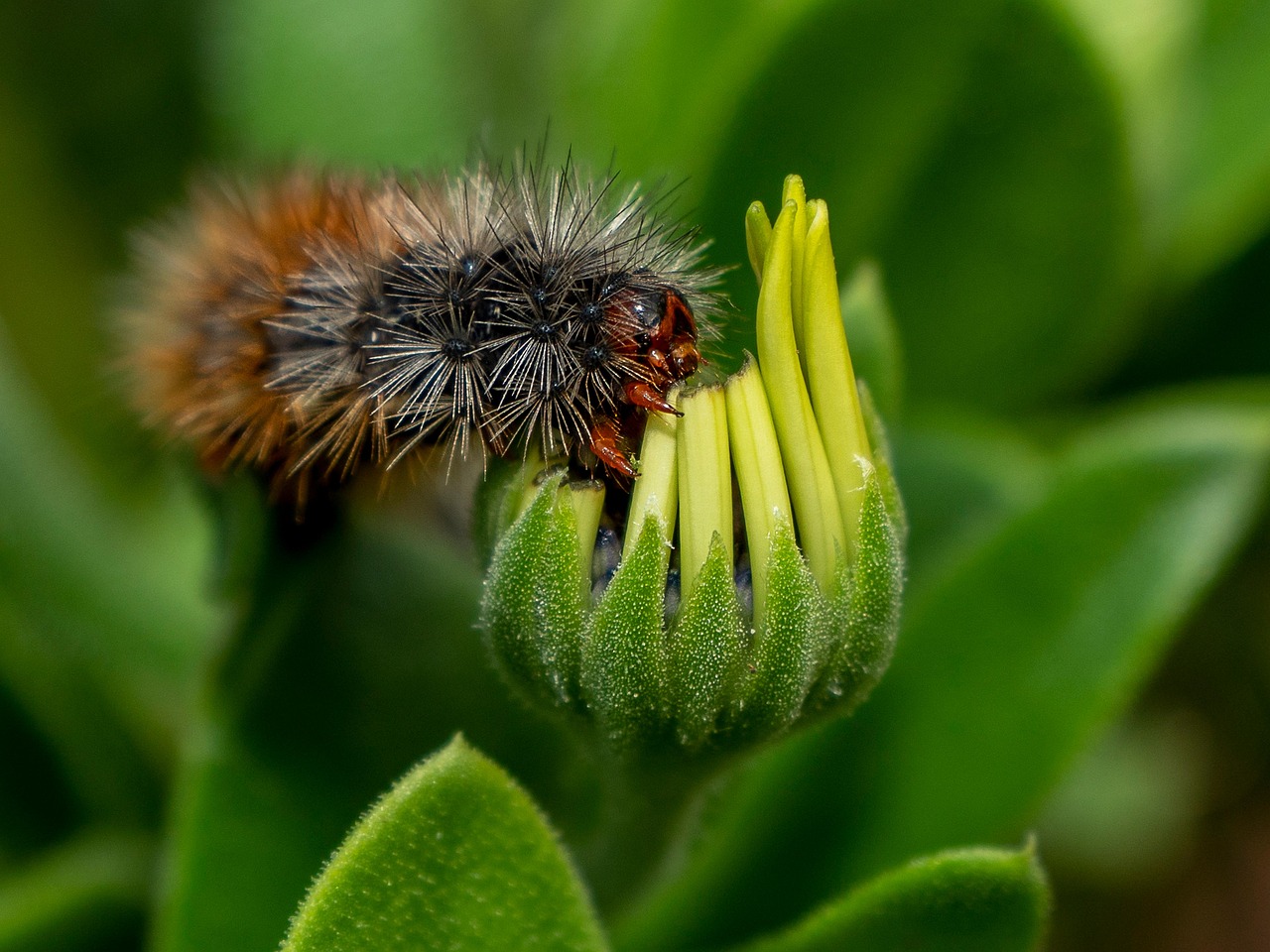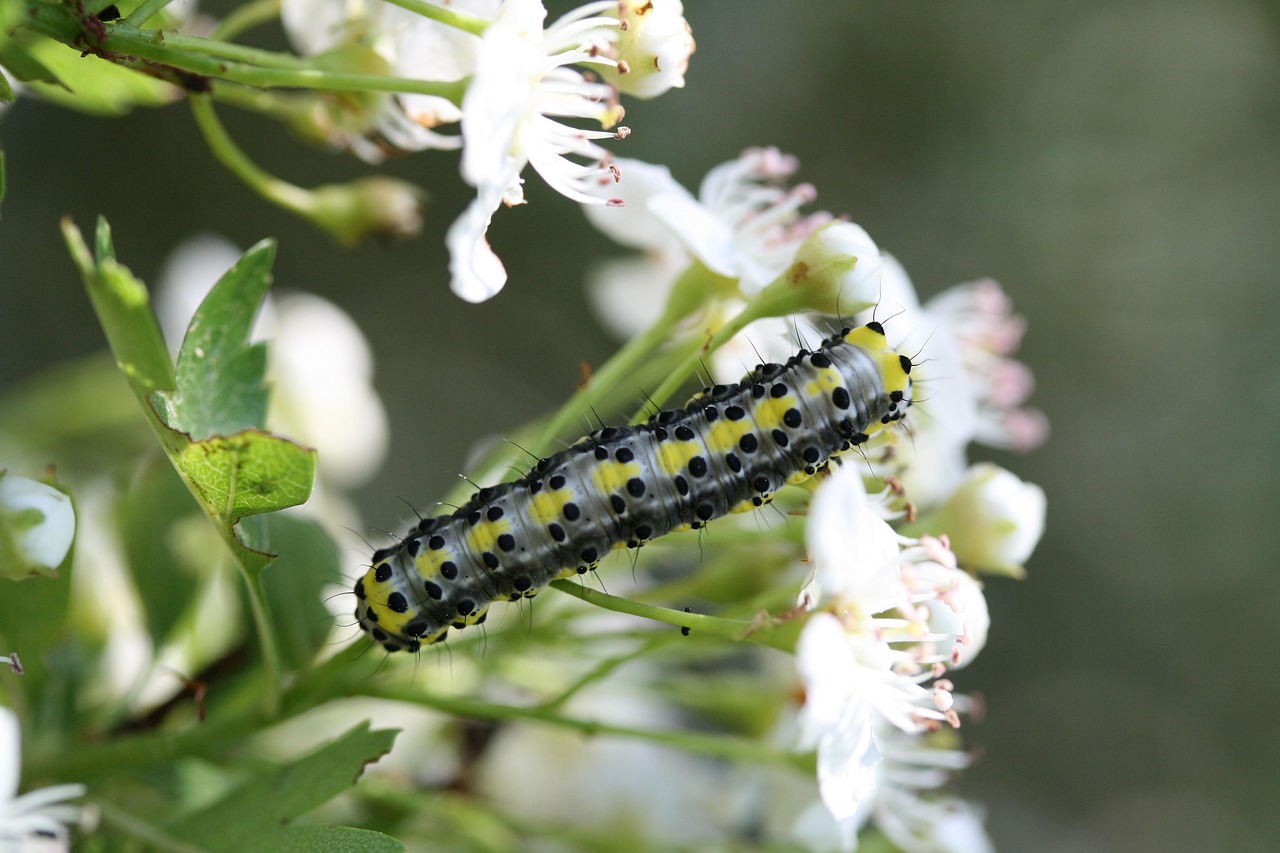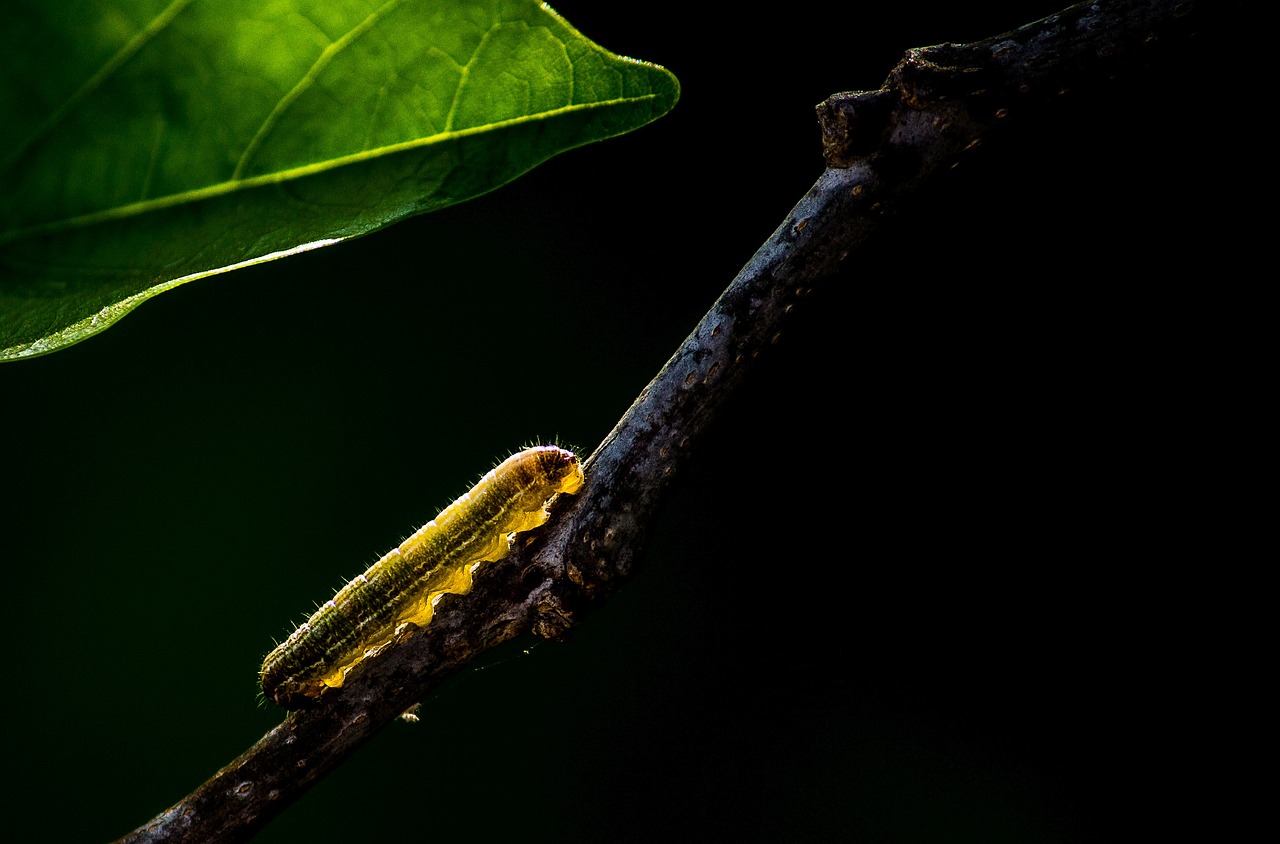White caterpillars, often perceived as ethereal beauties, can also pose a significant threat to gardens. Understanding their characteristics and behaviors is essential for gardeners and nature enthusiasts alike.
Caterpillars are the larval stage of moths and butterflies. Among the various species, white caterpillars are particularly intriguing due to their striking appearance. These creatures can range from soft, fuzzy forms to smooth-skinned varieties. Some people admire their beauty, while others view them as pests that can wreak havoc on plants.

The fascination with white caterpillars stems from their unique adaptations and life cycles. Many species are camouflaged or exhibit colors that help them blend with their surroundings. However, their diet can be quite destructive. Various species feed on leaves, flowers, and even fruits, leading to significant damage in gardens and agricultural settings.
Understanding White Caterpillars
White caterpillars belong to different families and genera. Each type can have distinct features and habits. Some of the more commonly encountered species include:
- Eastern Tent Caterpillar: Known for their social behavior, these caterpillars create silk tents in trees.
- White-marked Tussock Moth Caterpillar: Recognizable by their tufted appearance, they can be quite colorful despite their name.
- Spotted Tussock Moth Caterpillar: This species has distinctive spots and can cause substantial damage to a variety of plants.
To better understand the impact of these caterpillars on gardens, consider the following table that outlines key factors regarding their life cycle, habitat, and diet:
| Species | Life Cycle Duration | Preferred Habitat | Primary Diet |
|---|---|---|---|
| Eastern Tent Caterpillar | 4-6 weeks | Deciduous trees | Leaves |
| White-marked Tussock Moth | 3-5 weeks | Forests and gardens | Various tree leaves |
| Spotted Tussock Moth | 4-8 weeks | Gardens and shrubs | Broadleaf plants |
The life cycle of a white caterpillar typically includes four stages: egg, larva (caterpillar), pupa (chrysalis), and adult (moth or butterfly). During the larval stage, they grow rapidly, feeding voraciously on plant material. This growth is essential for their transformation into the next stage of their life cycle.
Caterpillars possess several adaptations that help them survive in their environments. Some species use mimicry or camouflage to avoid predators. Others may have spines or toxins that deter animals from eating them. These adaptations make them fascinating subjects for study in evolutionary biology.
Despite their charming appearance, it is crucial to recognize when white caterpillars become a garden menace. They can defoliate plants, leading to stressed vegetation and decreased yields for gardeners. Monitoring and management are vital in ensuring that these creatures do not disrupt the ecological balance of your garden.
In summary, white caterpillars present both beauty and challenge. Their role in nature is complex, making them an interesting topic for further exploration.
The Impact of White Caterpillars on Gardens
Understanding the impact of white caterpillars on gardens is essential for effective management. While they can be beautiful, their feeding habits may lead to substantial damage if left unchecked. This section will explore the various ways in which these caterpillars can affect garden health.
Defoliation and Plant Stress
One of the primary concerns with white caterpillars is their ability to defoliate plants. As they consume leaves, the following issues may arise:
- Reduced Photosynthesis: Leaves are crucial for photosynthesis. Without sufficient foliage, plants struggle to produce the energy they need.
- Stunted Growth: Defoliation can lead to stunted growth in affected plants, making them less robust and more vulnerable to diseases.
- Increased Susceptibility: Plants that are stressed due to loss of leaves may become more susceptible to pests and pathogens.
Identifying when caterpillars are causing harm is essential for garden maintenance. Regular inspections can help spot early signs of defoliation, allowing for timely intervention.
Favorite Host Plants of White Caterpillars
Certain plants are particularly attractive to white caterpillars. Understanding which plants are at higher risk can aid gardeners in protective measures. Some commonly preferred host plants include:
- Fruit Trees: White caterpillars often target apple, cherry, and peach trees.
- Vegetables: Common garden vegetables like cabbage, broccoli, and kale can attract these pests.
- Ornamental Plants: Many flowering plants, such as dahlias and zinnias, may also become victims.
Gardeners should monitor these plants closely during peak caterpillar season. This awareness can help mitigate potential damage before it escalates.
Signs of Infestation
Detecting a white caterpillar infestation early is key to protecting your garden. Here are some signs to look for:
- Caterpillar Presence: Spotted caterpillars on or near host plants are the most obvious sign.
- Chewed Leaves: Irregular holes or missing sections of leaves indicate feeding activity.
- Silk Webbing: Some species create silk tents or webbing on branches and leaves.
Regularly inspecting your garden for these signs can help in managing potential infestations effectively. Early detection allows for appropriate control measures to be implemented before significant damage occurs.
Control Measures for White Caterpillars
When white caterpillars become a nuisance in the garden, several control measures can be employed. Below are some common strategies:
- Handpicking: For smaller infestations, handpicking caterpillars can be effective. Wear gloves and remove them from the plants.
- Natural Predators: Encouraging birds and other natural predators can help keep caterpillar populations in check.
- Organic Pesticides: If necessary, consider using organic pesticides that target caterpillars without harming beneficial insects.
Implementing these strategies can help maintain a healthy garden environment while managing the presence of white caterpillars. Each method has its benefits and suitability depending on the specific situation within the garden.

Identifying Beneficial vs. Harmful White Caterpillars

Not all white caterpillars are created equal. While some can cause significant damage to gardens, others play beneficial roles in the ecosystem. Understanding how to identify these different types is essential for gardeners aiming to protect their plants while promoting biodiversity.
Common Beneficial White Caterpillars
Some white caterpillars are the larval stages of moths and butterflies that contribute positively to the environment. Here are a few examples:
- Clouded Sulphur Caterpillar: This caterpillar eventually becomes a beautiful butterfly, aiding in pollination.
- White Cabbage Butterfly Caterpillar: Although they feed on cabbage, they are also an essential food source for birds and other wildlife.
- Hummingbird Moth Caterpillar: This caterpillar is known for its role in pollination and its transformation into a stunning moth.
These beneficial species help maintain ecological balance. Recognizing them can prevent unnecessary removal or control measures that might disrupt local ecosystems.
Identifying Harmful White Caterpillars
Conversely, several white caterpillars can be detrimental to gardens. Identifying these pests early is crucial. Some harmful species include:
- Eastern Tent Caterpillar: Creates silk tents on trees and feeds in groups, leading to rapid defoliation.
- Spotted Tussock Moth Caterpillar: Known for its voracious appetite, it can damage a wide range of plants.
- Cabbage Looper: This caterpillar can cause significant harm to cruciferous vegetables, such as broccoli and kale.
Knowing the characteristics of harmful caterpillars can aid in timely intervention and help protect your garden from severe damage.
The Role of White Caterpillars in the Ecosystem

White caterpillars have important roles within their ecosystems, contributing to both food webs and biodiversity. Understanding these roles helps frame their presence positively, even when they pose challenges to gardeners.
Food Source for Wildlife
Caterpillars serve as a vital food source for various wildlife, including:
- Birds: Many bird species rely on caterpillars as a primary food source during the breeding season.
- Mammals: Small mammals and insects also consume caterpillars, helping maintain a balanced ecosystem.
- Predatory Insects: Certain insects, such as wasps and beetles, prey on caterpillars, assisting in natural pest control.
This interconnectedness highlights the importance of preserving white caterpillars while managing their populations in gardens.
Pollination and Plant Health
Certain white caterpillar species evolve into moths or butterflies that are key pollinators. Pollinators contribute significantly to plant reproduction by transferring pollen between flowers. This process leads to increased fruit and seed production, enhancing garden diversity and health. The following points illustrate their importance:
- Diverse Plant Growth: Pollination encourages a variety of plant species, contributing to a balanced ecosystem.
- Increased Yields: Healthy pollination enhances fruiting plants’ yields, benefiting gardeners and farmers.
- Biodiversity Support: Pollinators support various plant types, which in turn supports diverse animal species.
The roles of white caterpillars in ecosystems underscore the need for informed management practices rather than outright elimination. Balancing their presence with gardening goals can lead to healthier gardens and vibrant ecosystems.
Managing White Caterpillars: Best Practices
To effectively manage white caterpillars in gardens, a combination of awareness, monitoring, and sustainable practices is essential. By implementing certain strategies, gardeners can minimize damage while still appreciating the beauty and ecological role of these fascinating creatures.
Integrated Pest Management (IPM)
IPM is a holistic approach that combines various management techniques. The goal is to control pest populations while minimizing harm to the environment. Here are key components of IPM:
- Monitoring: Regularly inspect plants for signs of caterpillar activity. This includes looking for chewed leaves and the presence of caterpillars.
- Identification: Accurate identification of caterpillar species helps determine whether they are beneficial or harmful.
- Cultural Controls: Promote healthy plant growth through proper watering, fertilization, and spacing to make plants more resilient to pest pressure.
- Biological Controls: Introduce or attract natural predators such as birds and beneficial insects to keep caterpillar populations in check.
- Mechanical Controls: Use barriers like row covers or netting to protect vulnerable plants from caterpillar infestations.
By employing these techniques, gardeners can manage white caterpillar populations effectively without resorting to harsh chemicals.
Education and Awareness
Understanding the lifecycle and behavior of white caterpillars can empower gardeners. Here are some educational resources and methods to enhance awareness:
- Workshops: Attend local gardening workshops that cover pest management and beneficial insects.
- Online Resources: Utilize websites and forums dedicated to gardening for tips and experiences related to caterpillar management.
- Community Involvement: Engage with local gardening clubs or community gardens to share knowledge about pest control and plant health.
The more informed gardeners are about these pests, the better equipped they will be to handle them effectively, ensuring both plant health and ecological balance.
Final Thoughts
White caterpillars can be perceived as both ethereal beauties and potential garden menaces. While they contribute significantly to biodiversity and the food chain, they also have the capacity to cause damage to plants. Understanding the dual nature of these creatures is crucial for effective management in gardening.
Effective strategies such as Integrated Pest Management, combined with education and awareness, can help gardeners navigate the complexities of dealing with white caterpillars. By recognizing beneficial species and employing sustainable practices, it is possible to maintain a thriving garden ecosystem.
The balance between enjoying the aesthetic appeal of white caterpillars and protecting garden health is attainable. With careful observation and informed decision-making, gardeners can foster an environment where both plants and pollinators flourish harmoniously.
Ultimately, embracing the presence of white caterpillars as part of a diverse ecosystem allows for a more enriching gardening experience. By appreciating their beauty and understanding their roles, gardeners can cultivate spaces that support both human enjoyment and ecological balance.
